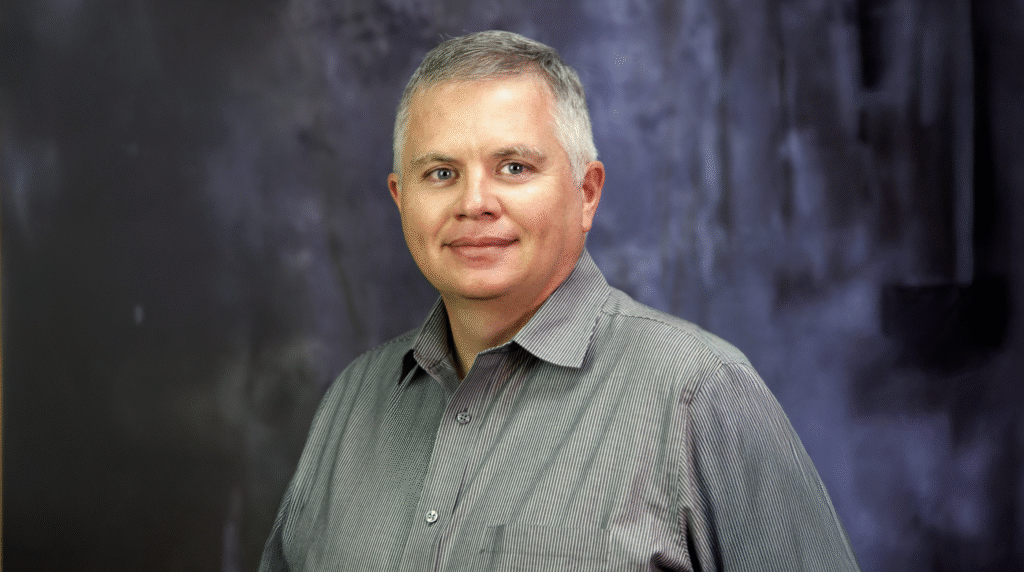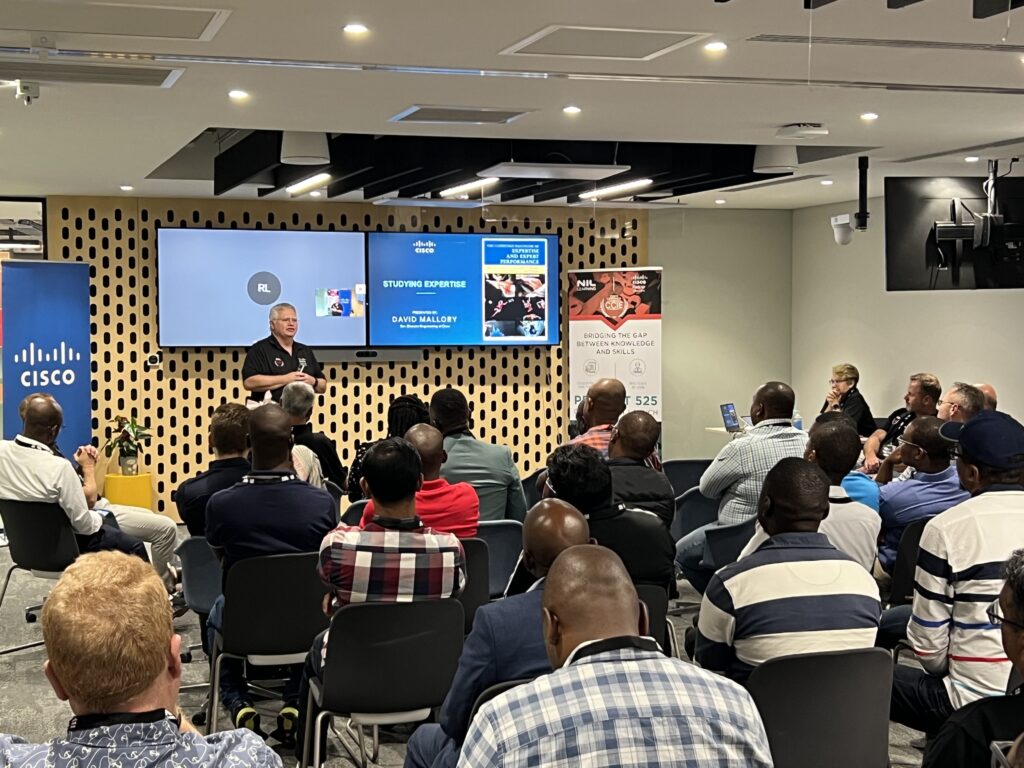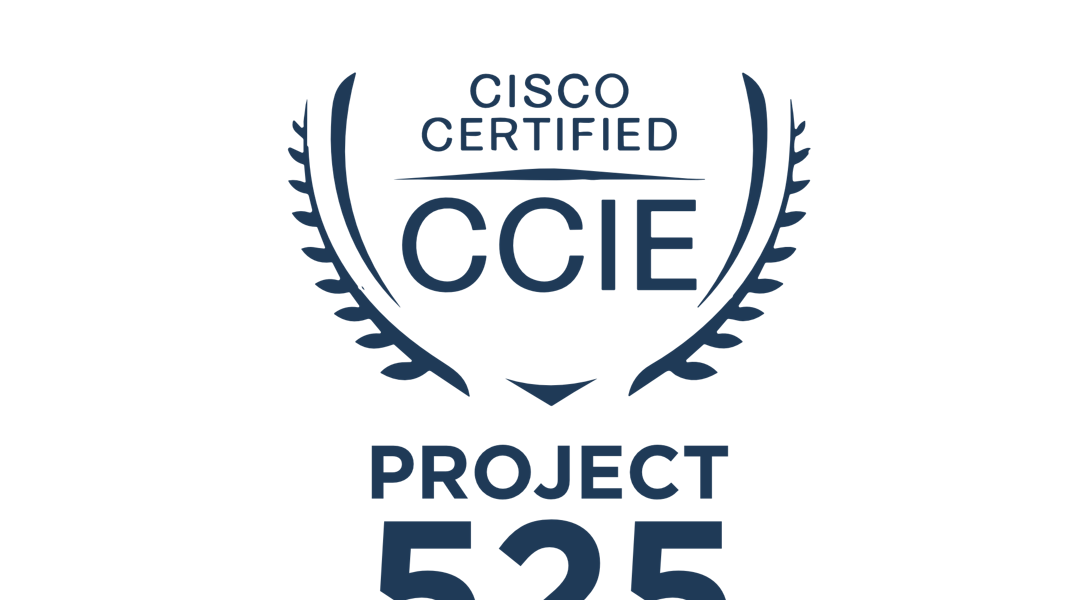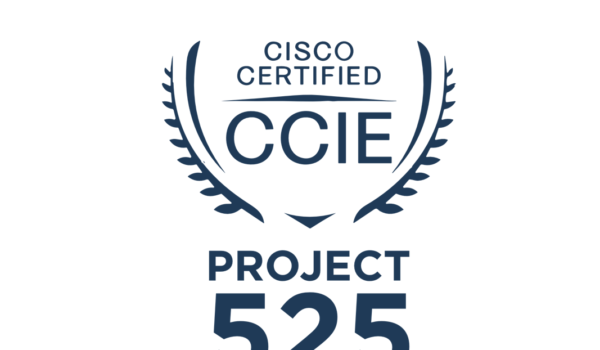David Mallory, Senior Director and Chief Technology Officer (CTO) for Learning and Certifications at Cisco, has been crucial in shaping the evolution of Cisco’s educational programs for over two decades. With extensive experience, including achieving four CCIE certifications, Mallory’s influence on the company’s learning ecosystem has been profound. While we talked, Mallory shared his perspective on the future of learning, the role of certifications, the impact of artificial intelligence (AI), and the innovative initiatives Cisco is leading to accelerate professional development.

A Deep Connection with Slovenia
Mallory’s long-standing connection to Slovenia is more than just business; it has become personal. Having visited the country 12 times, he likes to return and explore Slovenia even more. What started as a work relationship has turned into a bond that really shows the strength of the partnership between Cisco Learning and Slovenian partners, particularly NIL, where Mallory’s first project 21 years ago was with Marjan Bradeško from NIL. “There’s something about Slovenia – this industry seems to attract an incredible amount of networking talent. Can you imagine – about two-thirds of Cisco content is built here, which is remarkable. NIL, of course, plays a significant role in that, along with a few other key partners in Slovenia,” he describes the collaboration and emphasizes that Cisco’s success in creating industry-leading learning materials would not have been possible without the strong support from Slovenia.
The Rise of Virtual Learning
Reflecting on the rapid digitalization of learning, we discussed the shift to virtual learning, accelerated during the pandemic. We agreed, that one of the key benefits of virtual training is its affordability, as the elimination of travel and logistical costs has democratized access to learning.
“There’s a lot to gain from virtual delivery – flexibility, cost-effectiveness, and increased accessibility. However, something is lost in the purely virtual environment, particularly the personal connection and the opportunity to interact with peers who may come from different industries or backgrounds. These interactions can lead to valuable networking opportunities and career growth, which is something that’s harder to replicate virtually,” he comments and evolves the thought further:” but real game changer is AI, which will play a pivotal role in the future of education. AI is already transforming training, as it handles simpler tasks, allowing human experts to focus on creative problem-solving and complex challenges.”
Check out what Dave Mallory and the rest of the Cisco team had say about 30 years of learning partnership with Cisco.
Accelerating Expertise with Project 525

To address the challenge of accelerating professional development, NIL along with Cisco, launched Project 525, an initiative designed to help professionals achieve the prestigious CCIE certification within a year. This ambitious program is proving to be a success, with its structured approach, foundational knowledge, and cohort model of support driving impressive results in first attempt. Mallory emphasized that the first six months focus on building professional-level skills to ensure a consistent baseline for all participants, regardless of their experience level.
“But the program’s cohort-based model is a key differentiator. It creates a sense of community and mutual support, enabling participants to overcome personal challenges together,” explained Mallory and recalled a poignant moment when a new mother, part of the first cohort, received support from the group as they adjusted their study schedules to accommodate her. This collaborative spirit, he believes, is at the heart of the program’s success.
Yet, Mallory acknowledges that Project 525 is just the beginning. With AI’s increasing presence in the workforce, he believes the next challenge will be to accelerate the learning curve for professionals entering the field without much prior experience. The key will be providing immersive, hands-on experiences to help them develop the problem-solving skills required for high-level roles.
Embracing the AI Revolution
Learning is most effective through active practice, not just passive watching. While traditional video helps with instruction, it can’t teach skills like critical thinking. Immersive video, like 3D simulations and virtual environments, offers a more interactive, adaptive way to practice and learn, offers a potential of immersive environments to teach complex skills, including decision-making, empathy, and problem-solving. And reliance on AI might impact the development of practical expertise, especially among younger professionals.
A decade ago, Mallory attended a conference where they demonstrated a military simulation for cultural sensitivity. It was a highly immersive experience, where you’d role-play a situation and interact with virtual characters whose responses were dynamically adjusted based on your decisions. That level of immersion takes video beyond simple instruction, allowing you to practice and adapt in a simulated, yet realistic environment. AI will further enhance these immersive experiences by providing real-time feedback based on the learner’s actions. This shift will allow for scalable learning solutions, where complex scenarios can be simulated, and the content adapts dynamically to each learner’s choices.

These emerging technologies have the potential to revolutionize traditional coaching methods, enabling rich, personalized learning experiences at scale. “AI-driven innovations – such as interactive avatars and dynamically generated scripts – are already in development, pointing to a future where immersive, interactive video becomes a cornerstone of education and skill-building,” Mallory concludes.
How close we are to that vision remains to be seen, and only time will tell when such technologies become broadly accessible. But one thing is clear: we need to move forward together. We’re on the brink of another major shift – one that calls for us to adapt, evolve, and fully embrace the transformation ahead.
Are we ready?





